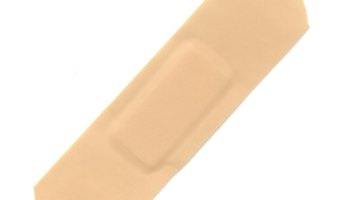Pimple Breakout With Strep
Group A streptococcus – sometimes called “group A strep” – is a bacterium that often lives in your throat and on your skin.
Although simply carrying the bacterium won’t always cause symptoms of an illness, group A streptococcus can cause infections, according to the Centers for Disease Control and Prevention. You may notice pimple-like lesions on your skin if the bacterium causes a skin infection.
Impetigo
Impetigo is an infection of the top layers of skin that generally begins when bacteria from an infected person enter a wound, sore or insect bite, according to the Cleveland Clinic. Although the staphylococcus bacteria are normally the cause of impetigo, group A strep can also be the culprit.
You may notice signs of impetigo generally within one to three days after you develop the infection.
The primary sign of impetigo is red or pimple-like lesions surrounded by irritated looking skin. The lesions eventually fill up with pus, break open within a few days and create a thick crust. Although you are more likely to notice these lesions on your face, legs and arms, they can erupt in any location.
Another Possible Culprit

Rash After a C-Section
Learn More
Scarlet fever is another form of a disease caused by group A strep. It normally shows up after you have a strep throat infection, although it is possible to have scarlet fever without strep throat. The scarlet fever rash could theoretically be mistaken for pimples, though impetigo is the more likely cause of strep-related lesions that resemble pimples.
The primary sign of scarlet fever is a broad rash of tiny red bumps that resembles sunburn and feels like goose bumps or sandpaper, according to the Centers for Disease Control and Prevention. The rash typically starts on the neck and face – skipping the area around the mouth – and travels down the trunk and beyond. It lasts about two days to one week. A high fever, swollen neck glands and a tongue that resembles a strawberry normally accompany scarlet fever bumps.
Treatment and Home Care
Your doctor may give you oral antibiotics if she diagnoses you with scarlet fever or impetigo caused by group A strep. You doctor may also treat impetigo with an antibiotic ointment for your skin. However, if you only have a minor case of impetigo, she may simply make hygiene suggestions, such as washing your skin and not touching the lesions while you wait for them to heal.
One cleaning method your doctor may suggest for mild impetigo is a solution of white vinegar and water followed by over-the-counter antibiotic ointment, according to MayoClinic.com. Soaking the affected area in this solution for 20 minutes will help you remove scabs from the lesions.
Warning

A Toddler With Redness on the Face
Learn More
If you are diagnosed with scarlet fever and you don’t receive treatment, the group A strep bacteria may spread to other parts of your body, such as your sinuses and blood.
It could also lead to rheumatic fever, a serious health condition that affects the skin, heart, nervous system and joints, warns MayoClinic.com. A condition called poststreptococcal glomerulonephritis, or PGSN, is a possible complication of impetigo.
It is kidney inflammation that occurs when antibodies to the infection damage small structures in your kidneys. Even if you are on antibiotics, let your doctor know immediately if you begin to experience symptoms such as bloody urine, reduced urination, facial swelling, stiff joints, painful joints or high blood pressure.











